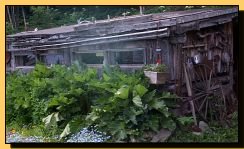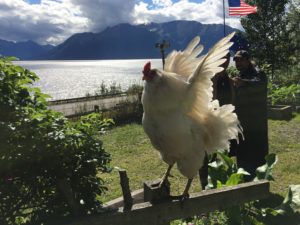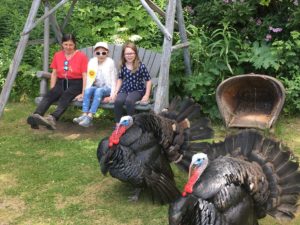 *** We have ducks, geese, chickens, and turkeys. Please do NOT bring your pets. ***
*** We have ducks, geese, chickens, and turkeys. Please do NOT bring your pets. ***
Indian Valley Mine represents early mining and settlement activity on the sparsely settled north side of Turnagain Arm during the years 1920-1939. Peter R. Strong developed the mine. Indian Valley Mine Shaft #2 He came to south central Alaska in 1889 and mined at different camps in the area. Strong was one of the relatively small number of "98ers" who stayed in Alaska after the gold rush. He developed one of the few lode mines on the north side of Turnagain Arm that operated for any significant length of time. Indian Valley Mine is significant for its association with small mining operations after the Alaska gold rush era, 1896-1908, and with early settlement activity on the north side of Turnagain Arm.
Reports of gold in the Turnagain Arm circulated in the early 1880's. Miners staked claims on the south side of Turnagain Arm in 1883 and 1884. Miners rushed to the area of the Arm. The supply towns of Hope and Sunrise soon developed. Prospectors visited creeks and their tributaries beginning in 1885. With the exception of Crow Creek, miners did not discover significant amounts of gold. A small village, Girdwood founded in 1896, supplied miners of Turnagain Arm's north side.
In June of 1905, a 20-acre quartz claim was staked on the north side of Turnagain Arm near Indian Creek. Subsequently, the claim was abandoned. Four years later Peter Strong discovered a lode deposit in the same area. The Indian Valley Mine and the Monarch Mine on upper Crow Creek were the only two lode gold mining ventures that were actively worked over a substantial period of time on the north side of Turnagain Arm.
 On November 10, 1910, Peter Strong discovered a quartz deposit on the north side of Turnagain Arm opposite the mining community of Hope. Strong began digging an adit into the hillside, and in the following year he staked sixteen quartz claims in four groups at the site. During this time, Strong lived in a cabin he had built on the bank of Turnagain Arm.
On November 10, 1910, Peter Strong discovered a quartz deposit on the north side of Turnagain Arm opposite the mining community of Hope. Strong began digging an adit into the hillside, and in the following year he staked sixteen quartz claims in four groups at the site. During this time, Strong lived in a cabin he had built on the bank of Turnagain Arm.
During the summer of 1919, Strong's cabin on the beach and all of its contents burned in a fire. He built a new cabin of logs shortly thereafter, locating it further up the hillside and away from the government railroad that had been built along the edge of Turnagain Arm in 1916. Strong returned to lode mining at the site during the 1920's and 1930's. In May 1932, he staked a small agricultural homestead at the site.
The Indian Valley Mine is locally significant for its association with lode mining and early settlement on the Turnagain Arm. The Cabin and Assay building are the oldest structures on the Turnagain Arm and are listed as a National Historic Site.
-courtesy National Register of Historic Places
United States Dept. of the Interior


